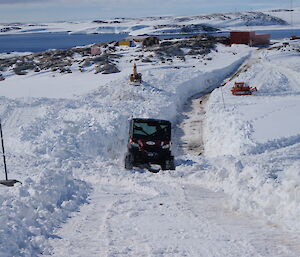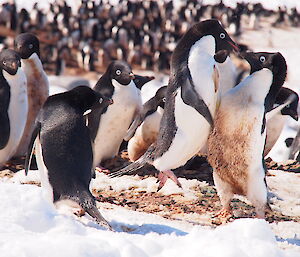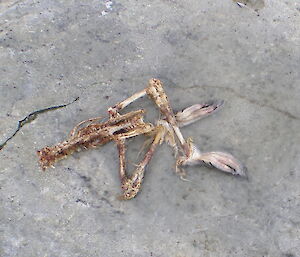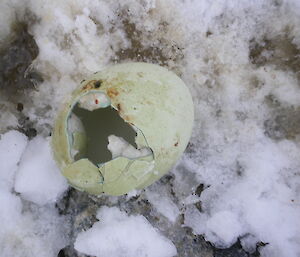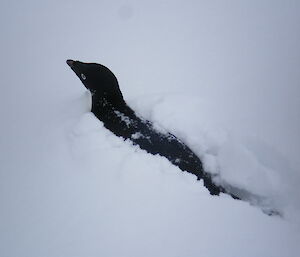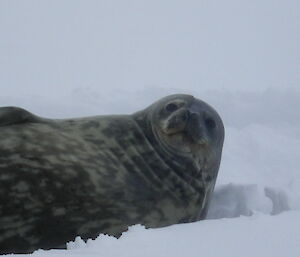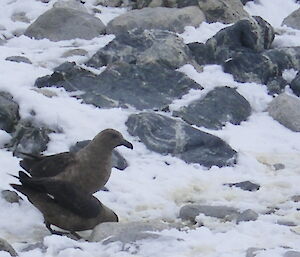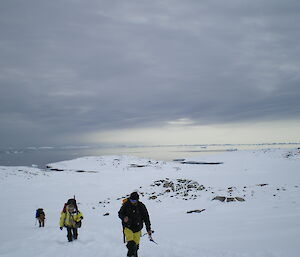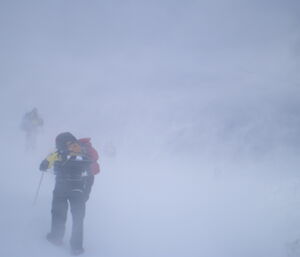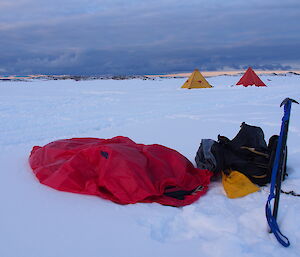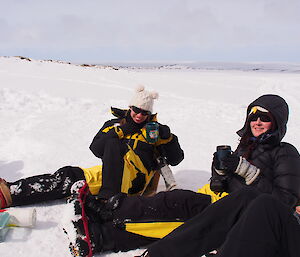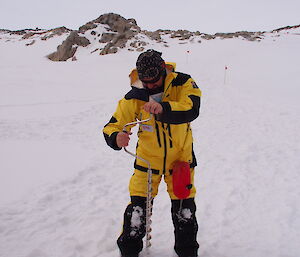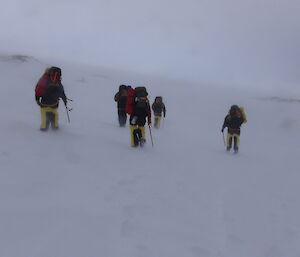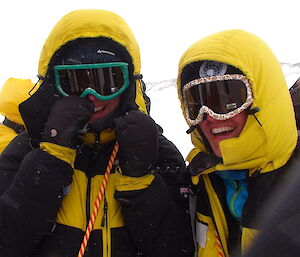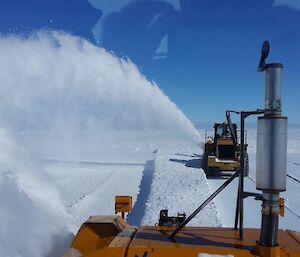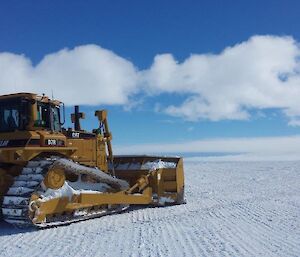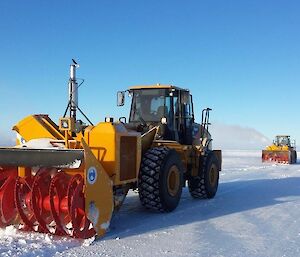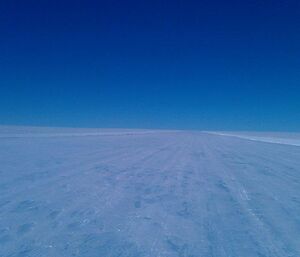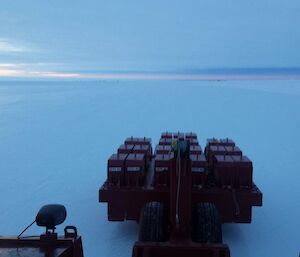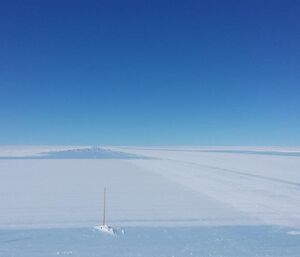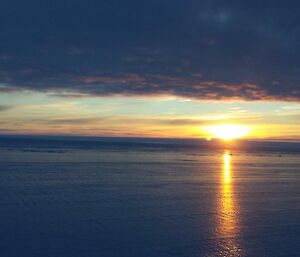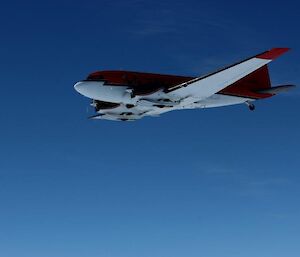Just beyond the Casey station limits, Shirley Island epitomises every preconceived notion I ever had of Antarctica. It’s all happening right here, right now. Seals are resting by ice cracks. Penguins have come back to their colonies for breeding season and skuas (large seabirds) are lurking on the edges waiting for an opportunity to strike.
Despite being only a 20 minute walk, access to Shirley Island does require travel across frozen sea ice which can be hazardous to the uninitiated. Winter over trip leaders are generously giving their time to share this special place with us — the new summer arrivals.
Trips begin with a visit to the field store to gather up the required safety gear. Each group carries several survival bags and radios, while every group member carries a throw bag, ice axe and boot spikes.
I am lucky enough to go on one of the first trips to the island right after a deep snowfall that turned the whole area into a winter wonderland. Our group breaks new trail from the station to the ice edge where we stop to call ‘VNJ Casey’ by radio to alert them we are entering the sea ice. The communications team track all groups who are out on sea ice hourly till they are firmly on land again.
Our trip leader shows us the correct techniques for drilling holes into the ice to measure thickness. We need 20 cm for safe foot travel and we currently have a robust 150 cm. He shows us how to recognise, and clear, snow from cracks in the ice with our ice axes and makes certain everyone has their throw ropes accessible in the event someone does accidentally go in the water. Later in the summer, as the ice thins and melts, the island will be accessible only by boat.
Once we are safely across, we see, smell and hear the giant huddles of penguins. They are gorgeous. They are gloriously stinky. They are loud. And — a new fact for me — they can swim through snow! A couple of curious fellows snow-swim all the way across valley to investigate the island’s newest inhabitants. On departure, we see only the tops of their heads and the winding ‘pengie’ snow-trails they leave in their wake.
As we come upon the colonies, I see hundreds of them busily building nests side by side, engaging in territorial kung fu style combat over particularly desirable rocks and yes, even a bit of penguin passion. I watch in fascination — penguins nesting as far as the eye can see and then more rippling through the water and projecting themselves onto land in a continuous gravity-defying wave.
On the way back to station we detour by a few lethargic Weddell seals taking a rest break. Their presence is yet another indicator there are ice cracks nearby, as they use them to break their way through to the surface for some quality breathing time and then a good nap. On the whole they implacably ignored us, although one did rouse itself enough to raise its head and look our way, urinate, roll around in it a bit, then go back to sleep.
A week later I return to Shirley Island and the changes are already dramatic. There are eggs this time and the breeding pairs take turn keeping the eggs warm while the other one is off fishing for food. I see one couple shuffle an egg between them carefully transferring it from the feet of one to the feet of the other before tucking it snuggly under belly to keep it warm.
The third group of Shirley Island inhabitants are the south polar skuas. These huge long-lived seabirds mate for life and form colonies just on the outskirts of the penguin rookeries. Much of the snow has melted and I become aware that just below the surface is an emerging sludge of mud, and penguin poop. More ominously it is littered with penguin carcasses and bones in varying states of decay.
Skuas often hunt in pairs — one will distract the penguins while the other comes in on the hunt. At one point I see a penguin scuffle and then an egg is left in the open which no-one immediately claims. It’s not clear to me why the egg had been abandoned — perhaps new parents? but sure enough shortly afterwards I witness exactly this: one skua and then the other swoops in to steal the egg. Both birds share the spoils.
Later, we wander back to station at around 2230 and the sun is just low enough in the sky to create the long shadows that make the floating icebergs glow on the horizon. I have to pinch myself to make sure I am really here and haven’t just fallen asleep in front of the Nature Channel (again).



